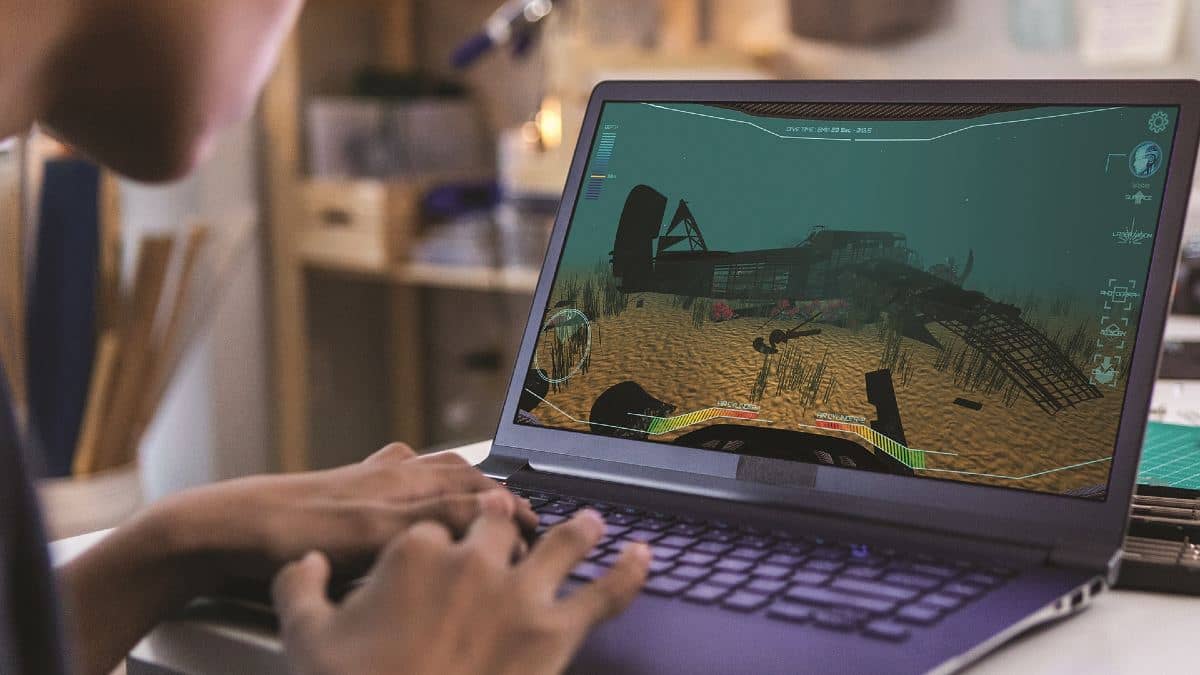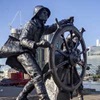
The museum recently launched Wreck Seeker, a new online game developed for classrooms across the country. In it players will research, hunt for and explore the final resting places of six semi-fictionalised wrecks from Australian and international waters.
Wreck Seeker, developed over three years, is a gamified learning platform with a direct focus on helping teachers to explain, develop and refine student historical skills explored in the Australian curriculum. Using the backdrop of wrecks from the 17th, 18th, 19th and 20th centuries, players will speak to historians, eyewitnesses, local fishers and other subject experts before deciding which sources offer the most reliable information. They will then overlay this research onto a map before diving, in 3D, on six beautifully re-created underwater environments.
Important tools for the classroom
It is now well established that gamified learning experiences can provide meaningful educational outcomes. This is as true for K–12 education as it is for tertiary, vocational and workplace learners. Perhaps more interesting is the role that well-designed games can play in engaging players not only with content, but also skill development and empathy building.
Unique to video games is the capacity to transport players into powerful scenarios while giving them agency to interact in these spaces and deal, in a realistic way, with the consequences of their actions. Further, such games allow players to replay scenarios a number of times and refine their reactions and skills to reach a desired outcome.
A side-effect of the remote learning practices forced upon us during COVID-19 has been a growing comfort with digital learning technologies from both teachers and students. At the museum we have seen this play out in the skyrocketing popularity of our online games and resources over the past 12 months.
An exciting challenge
As we are a maritime nation, shipwrecks hold a special place in the minds of Australians. Further, due to the complexity of uncovering what lies beneath the surface of our oceans and seas, mystery persists. Given these factors, the topic is fertile ground for a video game.
The development of Wreck Seeker follows that of two existing successful games (The Voyage and Cook’s Voyages) and five years of game development experience. Despite this formidable background, the development of Wreck Seeker has proved the most challenging to date. Pandemic disruptions aside, this has largely been due to the complex nature of the gameplay, and particularly the stunning detail in which the 3D environments have been rendered.
Despite these challenges, the drive to build a game that explored the world of maritime archaeology never faded. One reason for this was put best by the game development team:
There’s a constant set of dilemmas that maritime archaeologists are faced with and a constant stream of decisions they have to make. As such it’s actually the perfect subject for a game.
To ensure an appropriate level of accuracy and attention to detail, the development included an extensive process of consultation and review with our maritime archaeology team. This included recorded interviews and feedback loops during the development process – a degree of access to this level of technical and professional knowledge and expertise that is not possible in almost any other workplace. The research also drew on the museum’s Vaughan Evans Library.
Education resources for every Australian student
The museum is extremely excited by the prospect of making Wreck Seeker available to classrooms across the country. The choice to focus on gamified learning experiences is a considered an important one for the museum, reflecting the evolving nature of classroom learning in Australia. With three completed games, the museum is a global leader in this field among cultural institutions. Investment in online games has allowed the museum to reach students across the country (and the world) and has been a major contributor to the impressive growth of educational outreach from 65,000 to more than 400,000 visitors in a four-year period.
Where to from here? We’re always looking for ideas to inspire students and take them on a journey of discovery!
